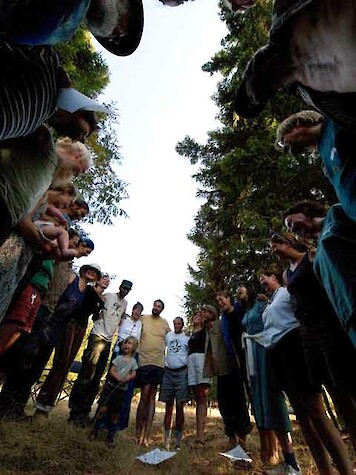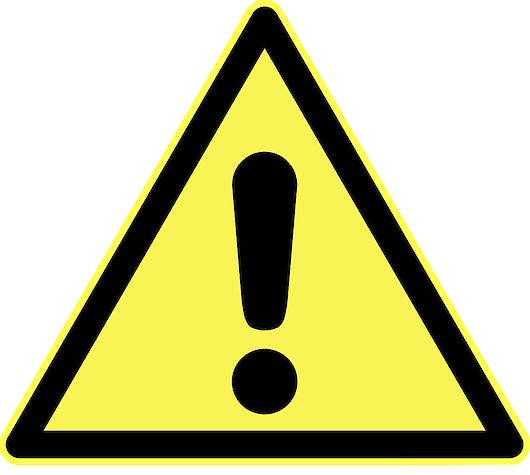Hazards and Funding
Jehnae Linkins ·During this week’s class presentations, our student groups discussed “Proximity to Hazards” and “Restoration Funding in the Chesapeake Bay.” Both topics are important, not only are our environmental communities being affected but our social communities as well. These both hold their own merit when it comes to dealing with issues within and around the community.


Let's first start by defining a hazard. A hazard is any source of potential damage, harm, or adverse health effects on something or someone (Merriam-Webster, n.d.). Some examples of hazards include health effects on people that could be caused by pollution, lead, or contaminants in the drinking water. Hazards could also be property or equipment losses to organizations and to the environment. The relationship between hazards and their proximity to communities in the area can be examined using the Hazard Measurement Risk Assessment Instrument. This tool depicts the community's probability of being exposed to a hazard as well as the frequency of hazard exposure. Identifying the frequency of these hazards to the community is fairly important, we want to know if this is happening everyday, once a week, once a month or even once a year. In addition to identifying the frequency of these potential hazards, we need to identify where they are taking place and if there is a specific community that is being affected. The vulnerability of these communities—in relation to these hazards—is equally as important. We want to know that the communities will be able to rebuild, respond, and recover from these hazards. There are a variety of hazards that can affect different communities: coastal hazards, chemical hazards, agriculture hazards, and more. To reach the overall goal of community survival and upkeep, people need to work with the sources of these identified hazards, and compare these demographic indicators to proximity, probability, frequency, and spatial impacts of different types of communities and individuals that reside in that community.

Funding of local, state, and federal government agencies usually goes toward best management practices (BMPs) that improve water quality, habitat, ecosystem services, water quantities, etc. For a proposal to be successful and receive funding, there needs to be a level of “admirable” efficiency associated with the project. Each state has specific funders that are relevant to their specific area. In Maryland, some of the funders are the Maryland Department of Natural Resources, Maryland Department of the Environment, and the U.S. Fish and Wildlife Service. Co-benefits to the proposals of projects that are also considered, but not limited to are: Brook trout, climate resiliency, fish habitat, forest buffers, healthy watersheds, protected wetlands, public access, submerged aquatic vegetation, stream health, toxic contaminants, tree canopies, and wetlands. This list is limited in that there are few to no socially focused benefits included, but funders are beginning to add some social benefits into their requests for proposals for the betterment of the communities.
In conclusion, both groups presented well thought out and researched themes pertaining to their topics of potential indicators for our EJI screen. More social action and advocacy needs to be done within these communities, as we know that there are many factors that contribute to the disruption of communities and individuals, especially in regards to different environmental, industrial, and chemical hazards. On the other hand, there needs to be more funded projects that are socially driven, not just economically, as we know that different issues not only affect the communities but the individuals living in those spaces as well.
References:
Merriam-Webster. (n.d.). Hazard. Retrieved from www.merriam-webster.com/dictionary/hazard
Next Post > Facilitating a Great Barrier Reef partnership workshop in Brisbane
Comments
-
Andrea M Miralles-Barboza 4 years ago
YES Jehnae! I have always wondered why people stop at just proximity/exposure to hazards as if thats the only thing that determines your long term vulnerability/resilience to something. So glad you brought up a need to intersect the physical vulnerabilities with the social. Good job :)
-
Faith Taylor 4 years ago
I LOVE that you address the frequency of hazard exposure. I think this is really important for EJ work because it provides much needed additional detail. Knowing that hazard exist is useful, but understanding how frequently you’re exposed to that hazard addresses your actual risk!
-
Taylor Gedeon 4 years ago
Great point, vulnerability and frequency are incredibly important to consider. I don't often see a mention of frequency, more-so yearly totals or unclear thresholds. Incredible point about the need for proposals to include socially focused benefits as well, rather than primarily/exclusively ecological. Awesome job!
-
Isabel Sullivan 4 years ago
I completely agree that the frequency of hazards is important to this EJ conversation. Since data collection can occur annually or less frequently, it is important to note the frequency that these hazards are affecting a community. For example, if we only measure coastal changes once a year, we miss details surrounding tides, storm events, etc. While I think the more frequently we can measure these hazards the better, I understand certain measurements can be timely and costly.
-
Chelsea Richardson 4 years ago
I agree with you that the frequency of hazards to a community should be identified and if there is a disproportionate proximity and exposure to certain communities. It would also be interesting to see if the proximity to hazards results in any adverse health outcomes, along with any health disparities.
-
Megan 4 years ago
Great point about social aspects often being co-benefits of BMPs instead of the focus. Often, restoration is ecologically focused with the assumption that "this is good for this environmental reason, therefore it must be good for the local community as well" i.e. forest buffers for culturally important but climate threatened sites. This isn't always true, and since there is no way to fully disconnect society and natural systems fully supporting society is a form of ecological restoration as well.
-
Amanda Rockler 4 years ago
Yes, to more socially driven projects! I think that the funders are moving in this direction, but this integration seems slow and is not always valued as highly as the economic and ecological restoration components in the review process.
-
Peter 4 years ago
Agree much with one of the core arguments that there is no research without funding. Large-scale public welfare projects must be funded by the state government, and it is difficult for individuals or enterprises to maintain it. But this also leads to your project not being purely considering ‘make sense’, but also the state government’s point of view. In addition, there exist many meaningful issues that need to be explored, but they have been put on hold because of their small monetary gains.
-
Amber 4 years ago
Great points, here, Jehnae. Thank you for making sure to include the discussion of frequency of exposure in addition to proximity- it's unclear whether this is not often included because the information is more difficult to obtain or it has just been overlooked.
-
Katrina Kelly 4 years ago
Jehnae, you drove the importance of the intersection between hazards and funding all the way home. Your comment, "...action and advocacy needs to be done within these communities" is especially key, we have seen many examples of what happens when communities are not directly involved in their own "restoration." It is hard not to read these exclusionary practices in much the same way that we might view the exclusion from funding - prejudicial and ultimately harmful. Sounding a clear alarm is important, and taking action is essential.
-
Katrina Kelly 4 years ago
Jehnae, you drove the importance of the intersection between hazards and funding all the way home. Your comment, "...action and advocacy needs to be done within these communities" is especially key, we have seen many examples of what happens when communities are not directly involved in their own "restoration." It is hard not to read these exclusionary practices in much the same way that we might view the exclusion from funding - prejudicial and ultimately harmful. Sounding a clear alarm is important, and taking action is essential.
-
Olivia Wolford 4 years ago
This post did a great job of explaining the need for funding to be socially driven, and how hazard funding can exemplify that current gap. Ecological and social needs go hand in hand. Great summary of class events as well!
-
Sarah 4 years ago
I love the term that you used which was "community survival." It states how harmful and deteriorating the issues of hazards can be to a community and, in some cases, can mean the death of a community. I also want to highlight how you stated that "...people need to work with the sources of these identified hazards..." Your statement emphasizes that there is not a single hazard in all communities. The sources of hazards are different within communities. One community may have a air quality hazard but another may be facing a water hazard. Great job in keeping it broad as not to indicate that there is a single hazard but many that communities are facing.
-
Imani Black 4 years ago
I wholeheartedly agree with our classes, I appreciated your breakdown of these two important topics. I also agreed when you said "...there needs to be more funded projects that are socially driven, not just economically, as we know that different issues not only affect the communities but the individuals living in those spaces as well." because it's absolutely true. Past approaches and methods towards these situations have needed to change to effectively engage and support our communities. It's about time that those organizations and others are finally realizing that. Well done!
-
Shakira 4 years ago
As others have mentioned, I like how you mentioned the gap in funding, but I truly enjoyed you taking the time to explain what a hazard is thoroughly. I sometimes bypass a topic if I lack understanding or don't follow the topic being discussed, so I appreciate you explaining the "foundation" of what a hazard is, before adding more to the discussion. Therefore someone not familiar with this field of study, will still be able to follow along easily.
-
Ashley Silver 4 years ago
You addressed it very well that we not only need to identify the hazardous indicators, but the demographic indicators as well. It gives the connections to which communities are exposed to such hazards.
-
Imani Wilburn 4 years ago
Before reading this post, when I thought of hazards, I did not go this deep into it or think about it in this way. This might be the first time I have seen hazards described the way you do and this definition really made me think about hazards in a different way. But of course, this is another under highlighted issue that needs more advocacy. I really learned from this blog and the way you wrote it.
-
Nylah McClain 4 years ago
I learned a bit about BMPs in my green infrastructure class and I was always caught up by the financial viability of a BMP. I have a ha it of being more concerned about the long term maintenance of a BMP than the initial funding. It’s really hard to find that balance between what is best for the community and what will be funded.

